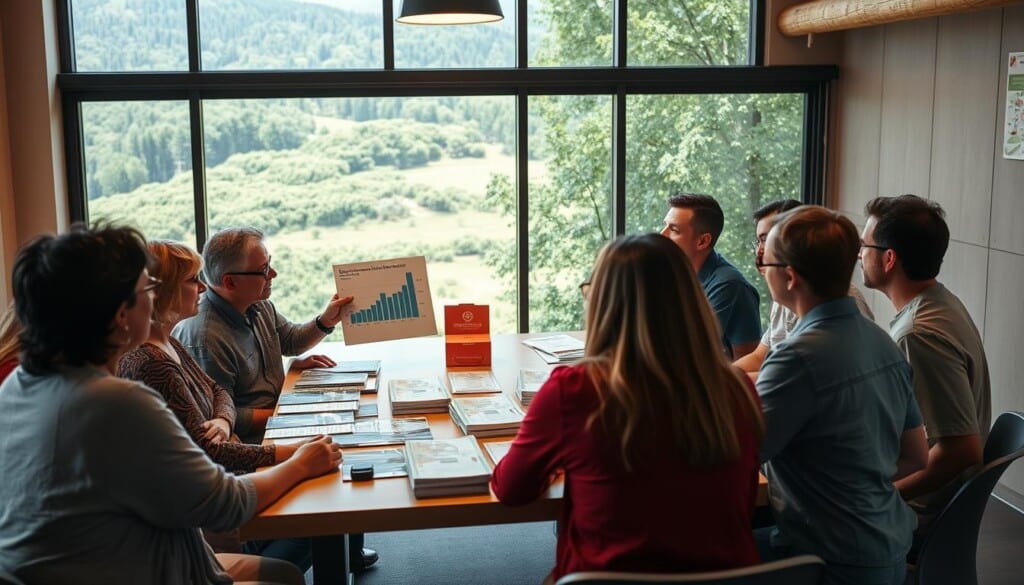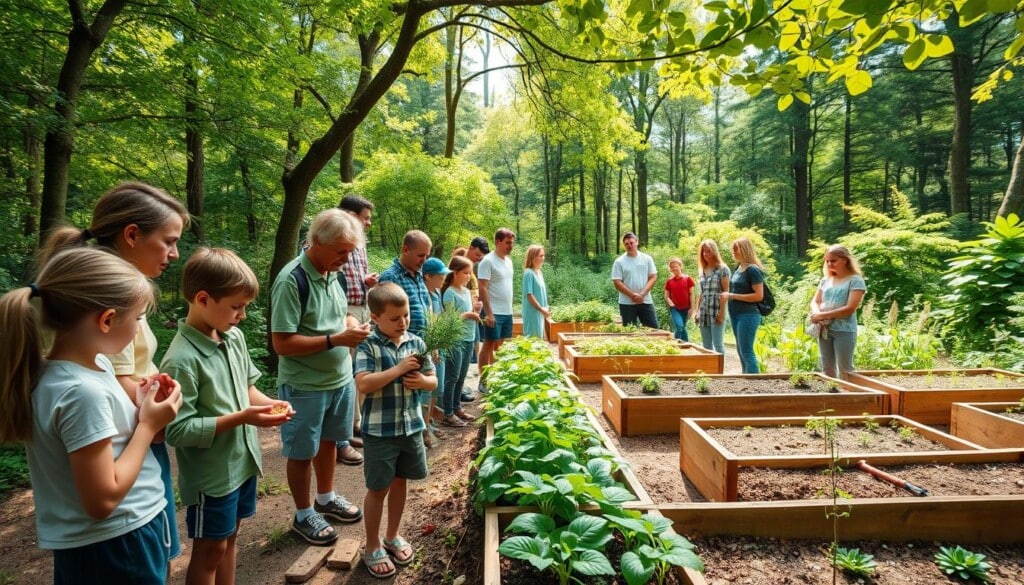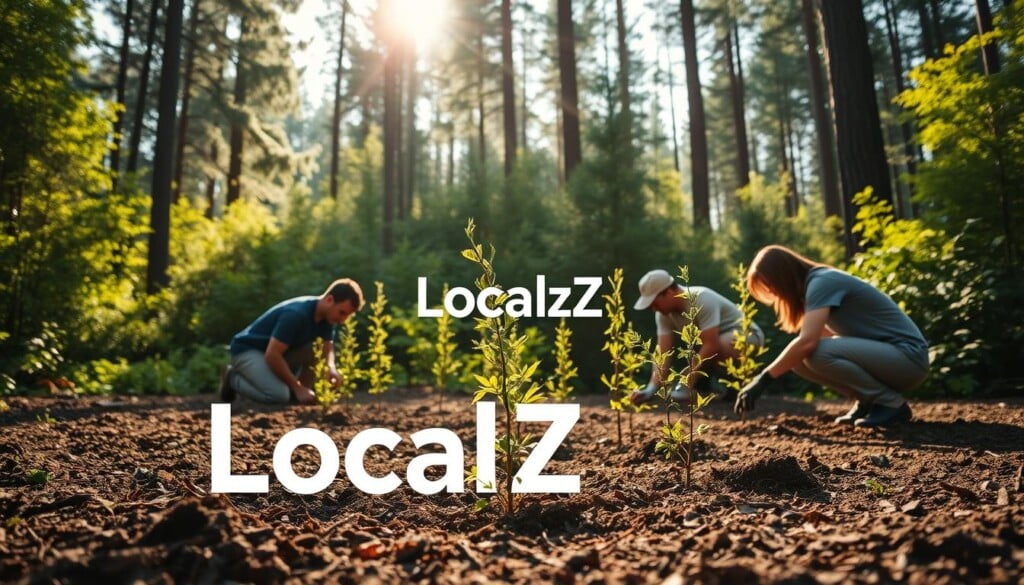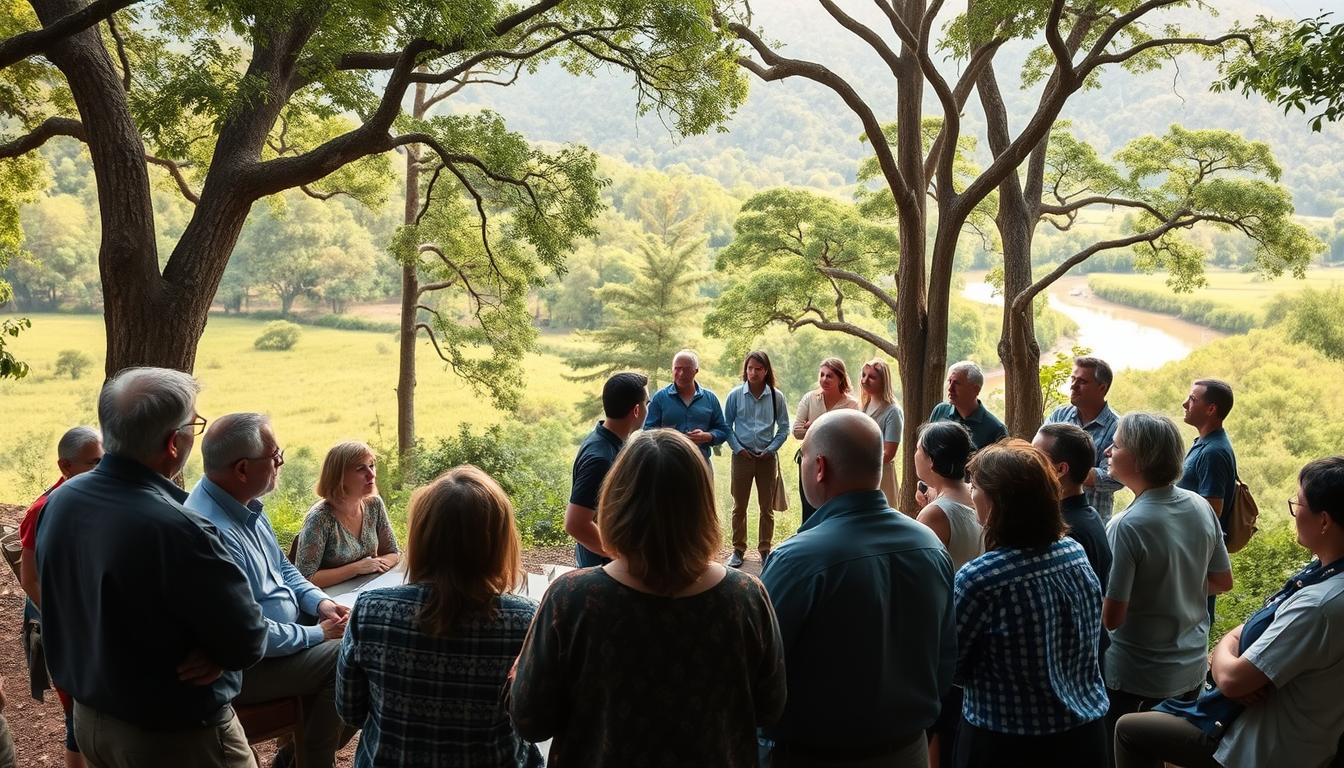What if the future of our planet depends on today’s actions by environmental groups? As worries about climate change, pollution, and losing biodiversity grow, it’s key to know the roles these groups play. They lead in green efforts and nature protection, aiming to save our environment. This article will look at top environmental groups in the US, showing how they help our planet for the future.
Key Takeaways
- Environmental conservation groups play a critical role in protecting natural resources.
- These organizations spearhead innovations and advocacy for sustainable practices.
- Community involvement is essential for successful nature preservation efforts.
- Understanding current environmental issues enhances our collective engagement.
- Supporting environmental organizations drives impactful green initiatives.
Introduction to Environmental Conservation
The environment is made up of many ecosystems, all important for the earth’s health. As we face climate change, biodiversity loss, and bad practices, conservation becomes key. It’s not just about keeping nature beautiful; it’s about making sure we have a good future.
Importance of Environmental Conservation
Understanding the need for conservation brings people together. It helps protect animals and plants, keeping our air and water clean. This work also helps our economy and keeps us healthy, creating a better life for all.
Overview of Key Challenges
But, there are big obstacles in conservation. Climate change messes with weather, hurting animals and plants. Pollution harms water and land, and cities and factories destroy homes. These problems make fixing the environment harder, so we must act smartly.
Role of Conservation Groups
Conservation groups play a big part in solving these problems. They gather support and spread the word, working with experts and local people. Together, they fight big environmental issues, helping our planet stay strong for the future.
Notable Environmental Conservation Groups
Learning about the work of Notable Environmental Conservation Groups helps us see their big impact on saving our planet. The Sierra Club, Greenpeace, and The Nature Conservancy are three key players. Each has its own history and projects that help protect our environment worldwide.
Sierra Club: A Pioneer in Conservation
The Sierra Club started in the late 1800s. John Muir founded it in 1892. It’s been a leader in fighting for wilderness and green living. The Sierra Club’s history shows its dedication to community action and protecting nature.
Greenpeace: Global Impact, Local Action
Greenpeace is known for its bold actions. It tackles big environmental problems like climate change and ocean health. Greenpeace works to get people involved and make their voices heard in environmental talks.
The Nature Conservancy: Protecting Land and Water
The Nature Conservancy is a top name in saving land and water. It uses science and community work to protect nature. By joining local efforts, we can help The Nature Conservancy’s mission. Learn how to help at this link.
How Environmental Conservation Groups Operate
Conservation groups do many important things to help the environment. They raise money for their causes, which helps them keep working. They also get people involved through volunteer work, which is key to their success.
Fundraising Efforts
Fundraising is a big deal for these groups. They get money from people, companies, and government grants. This money helps them do things like fix habitats and teach people about the environment.
Volunteer Opportunities
Volunteers are very important to these groups. They help out with things like planting trees and studying wildlife. This not only helps the environment but also gets people involved and caring about it.
Advocacy and Policy Work
Advocacy is at the heart of what these groups do. They work to make environmental policies better by talking to people and lawmakers. They do research, make reports, and join forces to get their voices heard.

Local Conservation Organizations to Know
Local conservation groups play a big role in protecting our environment and improving community life. They tackle different conservation challenges, making a big difference. The Audubon Society, Earthjustice, and the Trust for Public Land are great examples.
Audubon Society: Bird Conservation Focus
The Audubon Society works hard to save bird habitats. They aim to stop bird populations from falling. Their efforts help keep ecosystems healthy for both animals and people.
Earthjustice: Legal Advocacy for the Environment
Earthjustice fights for the environment through law. They challenge harmful policies and protect natural resources. Their work is key to keeping our planet safe.
Trust for Public Land: Community Parks and Places
The Trust for Public Land creates parks and green spaces for everyone. They improve local biodiversity and quality of life. Their goal is to bring nature closer to communities.
The Role of Community in Conservation
Community involvement is key for successful conservation. Local volunteers help by feeling a sense of ownership. This makes them more committed to protecting the environment.
They don’t just help out; they also spread the word about conservation. This helps build a culture of sustainability in their communities.
Schools are important for teaching the next generation about the environment. By working with schools, conservation groups can teach students about local ecosystems. This education helps students understand the importance of conservation.
Students get to apply what they learn in real-life projects. This makes them more aware of their role in protecting the environment.
Building partnerships with local businesses and organizations is vital. These partnerships help tackle specific environmental problems. They bring together resources and expertise, making conservation efforts more effective.
The Impact of Environmental Education
Environmental education is key in teaching communities about ecological issues. Conservation groups create programs for schools and local groups. These programs teach people to care for the environment and tackle big environmental problems.
Programs Offered by Conservation Groups
Many conservation groups have educational programs on sustainability and biodiversity. For example, the National Wildlife Federation offers materials that fit school lessons. These environmental education initiatives help students get involved in local conservation.
Importance of Youth Involvement
Getting young people involved in conservation is vital for the future. It teaches them to protect nature. Through these programs, they learn important skills and develop a love for the environment.
Awareness Campaigns and Their Reach
Awareness campaigns make people see the importance of environmental issues. Organizations spread the word about conservation and environmental problems. These efforts get people to act, leading to real change in the community.

Current Environmental Issues in the US
It’s key to know the environmental problems in the United States. Climate change is changing our ecosystems and weather. It’s a big issue that affects our economy, society, and environment.
Biodiversity loss is also a big worry. It means species are disappearing, which affects our planet’s health. Pollution adds to these problems, harming both people and the environment.
Climate Change and Its Effects
Climate change causes extreme weather, rising sea levels, and changes in where crops grow. It affects cities and towns. To fight this, we need to use clean energy, save energy, and use land wisely.
It’s important to teach people about these issues. This helps us all work together to solve them.
Biodiversity Loss and Its Implications
Biodiversity loss hurts our ecosystems. It makes food chains weaker and reduces genetic diversity. This makes it hard for nature to adapt to changes.
We can protect nature by saving habitats and changing policies. It’s important to see how all living things are connected. This helps us support efforts to save biodiversity.
Pollution: Solving a Growing Crisis
Pollution is a big problem that makes other issues worse. It contaminates air, water, and soil, harming health and nature. We need to find ways to solve this.
Using laws, new technologies, and working with communities can help. Reducing waste, recycling, and using cleaner energy are important steps. These actions can help fix this big problem.
Strategies for Effective Conservation
Effective conservation strategies are key to protecting our environment and keeping natural resources sustainable. These strategies can range from personal actions to large community efforts. They aim to keep nature and human activities in balance, fostering a peaceful relationship with the earth.
Sustainable Practices to Adopt
It’s important to adopt sustainable practices in conservation. This includes cutting down on waste, saving water, and using renewable energy. Communities can also help by planting trees, starting gardens, and restoring habitats. These efforts boost local biodiversity and help ecosystems thrive.
Technology in Conservation Efforts
Technology is vital in conservation work. Tools like Geographic Information Systems (GIS) and remote sensing help collect detailed environmental data. This technology aids in making better decisions by providing insights into ecological changes and resource management.
Importance of Research Findings
Research findings are essential for effective conservation strategies. Ongoing studies improve sustainable practices in conservation. These findings guide policymakers, shaping laws and conservation efforts. This leads to more effective environmental protection.
How LocalZ Supports Environmental Groups
LocalZ is a key online directory that connects communities with local businesses. It also supports conservation efforts. The platform helps people find sustainable practices and environmental initiatives in their area. It makes it easier for community groups to reach out to residents and spread the word about conservation.
Community Engagement Through Local Listings
LocalZ’s platform brings people and local environmental groups together. Businesses listed on LocalZ can show their dedication to being green. This attracts socially aware shoppers and helps local businesses while supporting conservation.
Financial Support for Local Conservation
LocalZ shows its dedication to the environment by giving 50% of its Business Listing Fee to eco-groups. This financial help is vital for local conservation efforts. It supports groups working on saving biodiversity, restoring habitats, and more.
Promoting Sustainable Businesses
LocalZ showcases businesses that focus on being green. This helps grow the network of eco-friendly businesses. It also teaches consumers the value of choosing green options, boosting community support for the environment.

Ways to Get Involved with Conservation
People play a big role in keeping local ecosystems healthy. By joining local groups, we can work together towards common goals. Learning how to use our resources well helps us make a bigger difference.
Joining Local Efforts
Getting involved in local conservation is a big step. Community groups often need help with clean-ups and planting trees. Helping out makes us feel connected and helps the environment.
Supporting Conservation Through LocalZ
LocalZ helps connect us with local conservation groups. It makes it easier to find and join nearby projects. This way, we can help out and make a real difference in our area.
Educating Others on Conservation Issues
Teaching others about conservation is key. When we share what we know, we inspire others to care too. Whether it’s through workshops or just talking, we can encourage more people to join in.
Measuring Success in Conservation Efforts
Checking how well conservation works is key to keeping our environment safe. Groups use different ways to see if their efforts are paying off. They look at things like how many species are saved, how much land is fixed, and how many people help out.
Indicators of Progress
Knowing how well conservation is doing is very important. Things like how many endangered animals there are and how much land is fixed help us understand. By checking these things over time, we can see if our actions are working.
Case Studies of Successful Initiatives
Looking at examples of good conservation work shows us what works. For example, fixing wetlands has made water cleaner and helped more animals. Working together on forest care has also made a big difference. These stories show us the best ways to protect nature and why we need to keep track of our progress.
The Future of Conservation in the US
For conservation to keep going strong, we need to get better at measuring success. New tech like remote sensing and data tools could help a lot. We also need to face new problems like climate change and losing natural spaces to keep our planet healthy.
Conclusion: The Collective Responsibility for Conservation
Our environment faces big challenges, making collective conservation key. Every person can make a difference, showing that local action is vital. By joining community efforts and adopting green habits, we can greatly improve our environment.
Encouragement to Act Locally
Local conservation efforts are very important. Taking part in clean-ups, saving resources, or promoting green living helps a lot. It makes people feel connected and responsible, encouraging more to help create a sustainable future.
The Role of Businesses in Conservation
Businesses play a big role in saving our planet. By using sustainable practices, companies can lessen their impact on the environment. This inspires their customers and helps make eco-friendly choices common.
Final Thoughts on Environmental Stewardship
Protecting our environment is a team effort. Everyone, from individuals to big companies, must work together. Our actions today shape the planet for tomorrow. By working together, we can make our world healthier and more sustainable.

